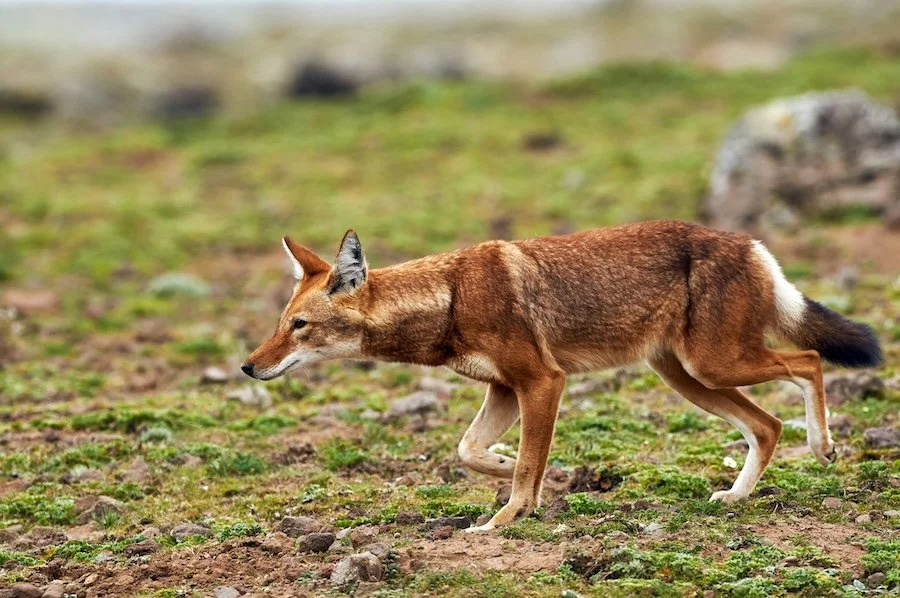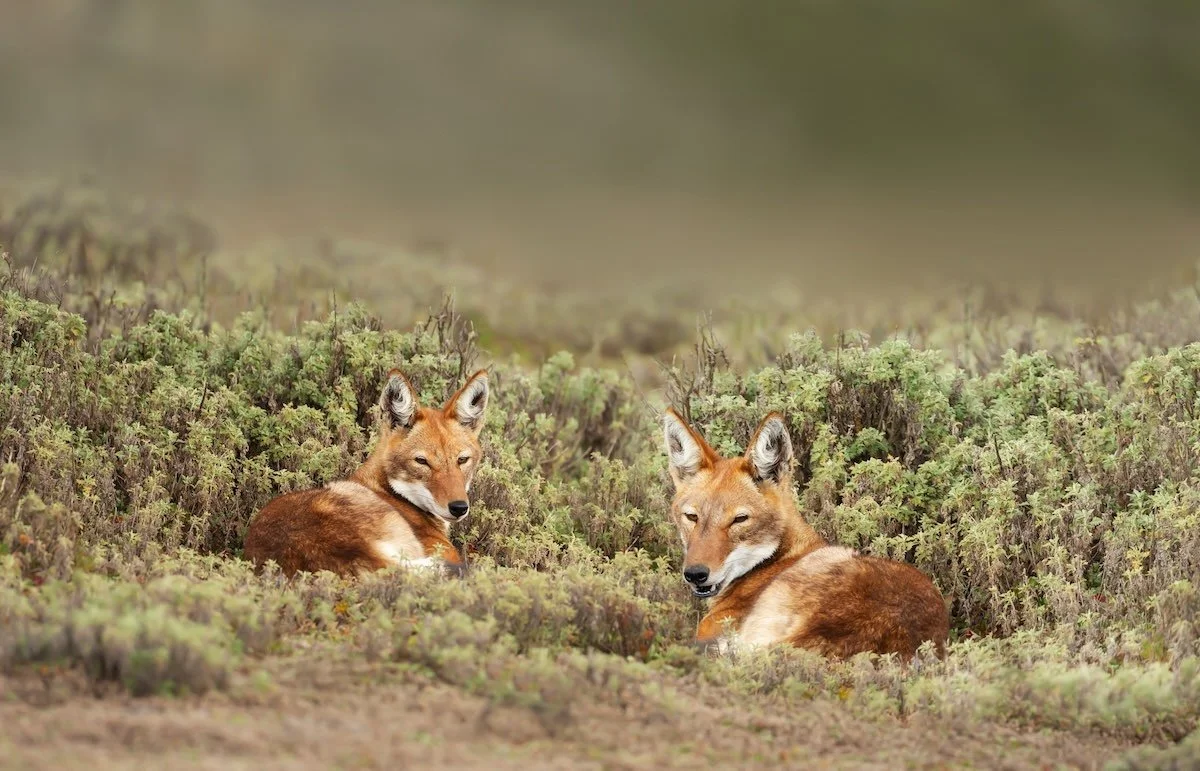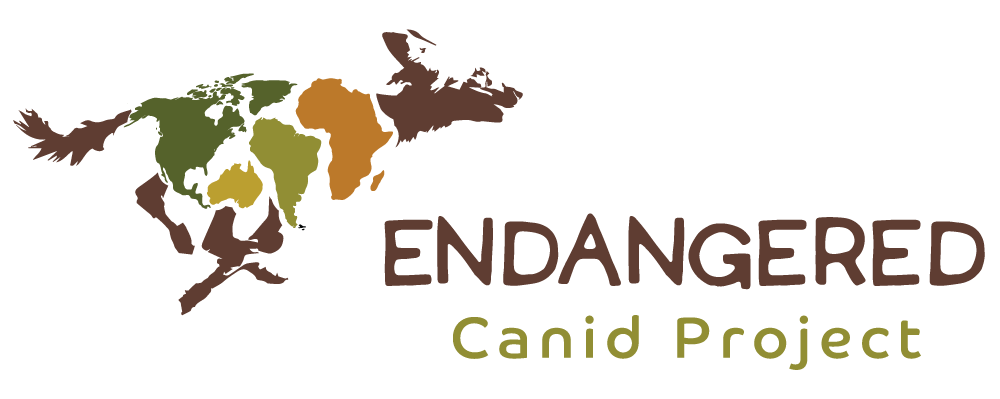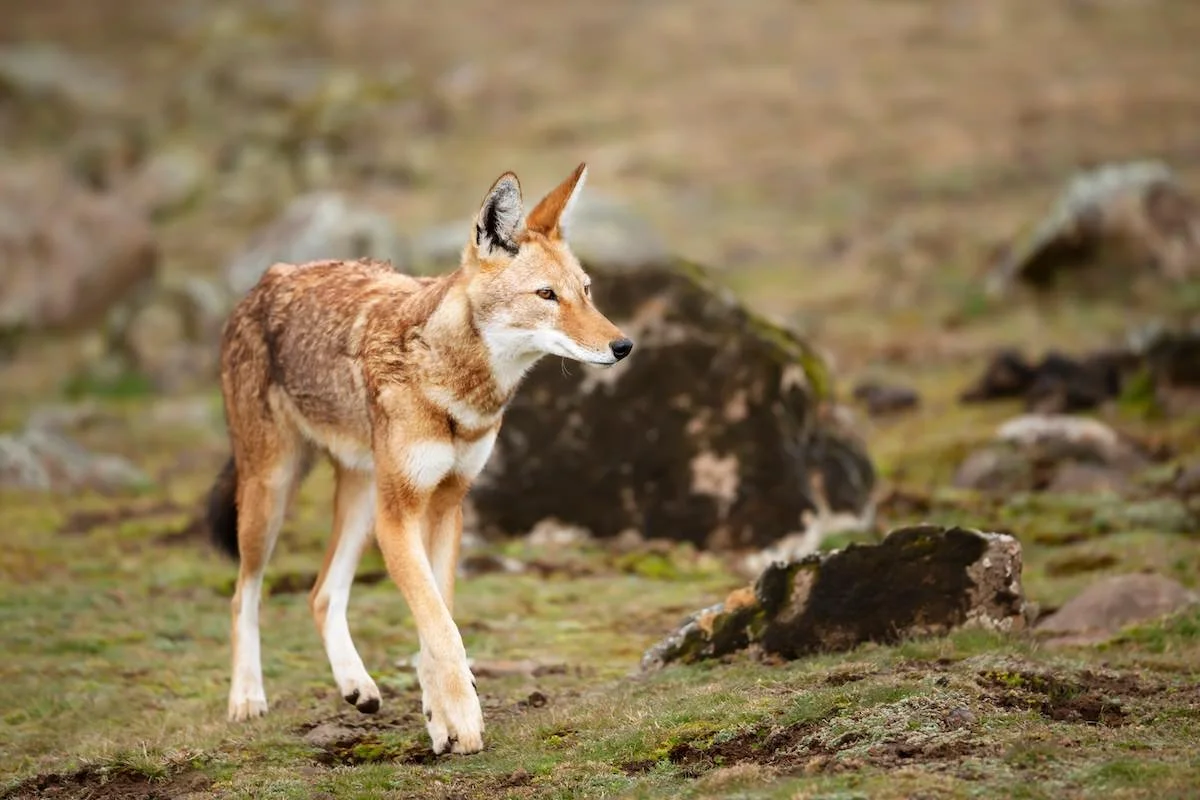ETHIOPIAN WOLVES



Africa's Rarest Canid
The Ethiopian wolf (Canis simensis), also known as the Simien jackal or Simien fox, is Africa's most endangered carnivore and the world's rarest canid. Endemic to the Ethiopian highlands, these unique wolves have adapted to life in the high-altitude moorlands and grasslands, becoming a symbol of Ethiopia's rich biodiversity and a focus of conservation efforts.
Ethiopian wolves are medium-sized canids, weighing between 11-19 kg (24-42 lbs) and standing about 60 cm (24 inches) tall at the shoulder. Their most striking feature is their reddish-brown coat, white throat, and black-and-white tail, giving them an appearance somewhat similar to a red fox. They have long legs, a narrow snout, and pointed ears, adaptations that suit their high-altitude habitat and specialized diet.
Ethiopian wolves are found exclusively in the highlands of Ethiopia, primarily in the Bale Mountains and the Simien Mountains, with smaller populations in other high-altitude areas. They inhabit afro-alpine regions at elevations between 3,000-4,500 meters (9,800-14,800 feet). These areas are characterized by moorlands, grasslands, and heather, providing the perfect environment for their primary prey.
Rodent Specialists: The Hunting Habits of Ethiopian Wolves
Unlike many other wolf species, Ethiopian wolves are highly specialized predators, with rodents making up about 90% of their diet. Their primary prey is the giant mole-rat, endemic to the same region. This specialization is reflected in their hunting behavior; they are often seen stalking and pouncing on prey alone, more like foxes than pack-hunting wolves.
Despite their solitary hunting habits, Ethiopian wolves are social animals, living in packs of up to 13 individuals. These packs are typically extended family groups, cooperating in territory defense and pup-rearing, but not in hunting.
Facing Threats: The Maned
Wolf's Struggle for Survival
Despite their adaptability, maned wolves face several conservation challenges. The International Union for Conservation of Nature (IUCN) classifies them as Near Threatened. The primary threats to their survival include habitat loss due to agricultural expansion and urban development, road accidents as human infrastructure encroaches on their territory, conflicts with humans (often due to perceived threats to livestock), and diseases transmitted by domestic dogs. These pressures have led to a decline in maned wolf populations across their range.
On the Brink: The Critical Status
of the Ethiopian Wolf
The IUCN lists the Ethiopian wolf as Endangered, with recent estimates suggesting fewer than 500 individuals remain in the wild. The primary threats to their survival include habitat loss due to human encroachment and agriculture, disease transmission from domestic dogs (particularly rabies and canine distemper), and occasional persecution by humans. Their limited range and specialized habitat requirements make them particularly vulnerable to these threats.
Conservation efforts for the Ethiopian wolf are intensive and multi-faceted. Key initiatives include habitat protection within national parks and protected areas, vaccination programs for both Ethiopian wolves and domestic dogs to prevent disease transmission, and community education programs to reduce human-wildlife conflict. Captive breeding programs are being considered as a potential safeguard against extinction.
Wolf Wonders: Fascinating
Ethiopian Wolf Facts
Ethiopian wolves have several unique characteristics. They are the only wolf species found in Africa and are more closely related to grey wolves and coyotes than to other African canids. Their social structure is unusual, combining the pack-living of wolves with the solitary hunting of foxes. They have a distinctive high-pitched call used to communicate within their packs, often heard at dawn and dusk.
A Unique Legacy: The Maned
Wolf's Place in Nature
The maned wolf represents a unique branch of canid evolution and an important part of South American ecosystems. By understanding and appreciating these extraordinary animals, we can work towards ensuring their survival for future generations to marvel at and study. Through continued conservation efforts and public engagement, there is hope for the future of the maned wolf in the diverse landscapes of South America.










